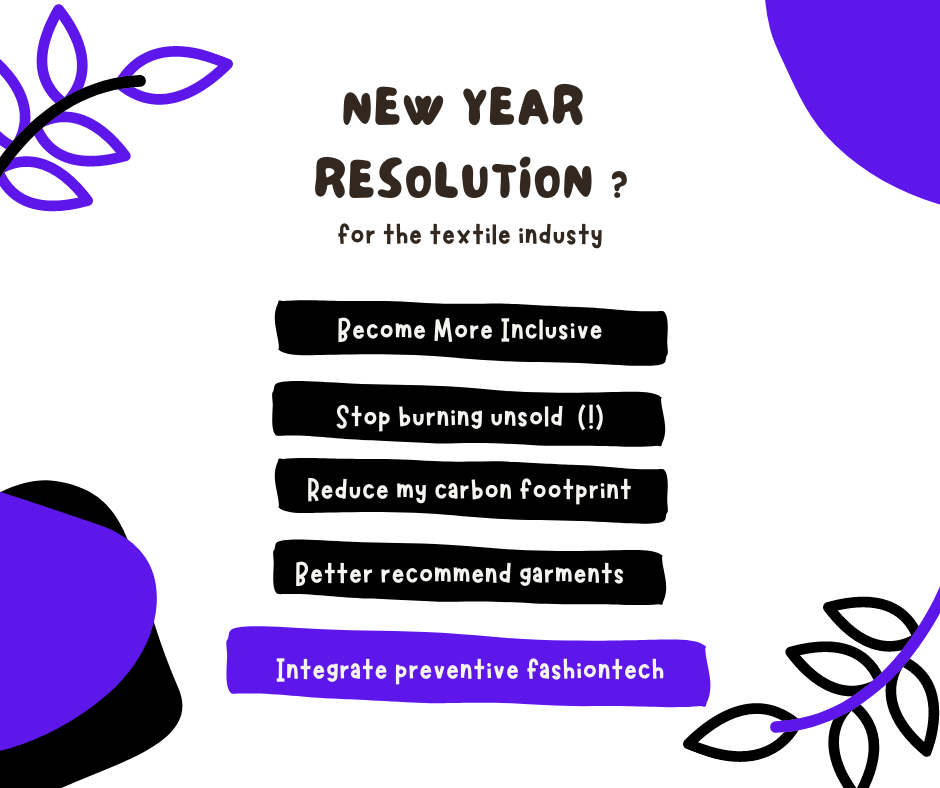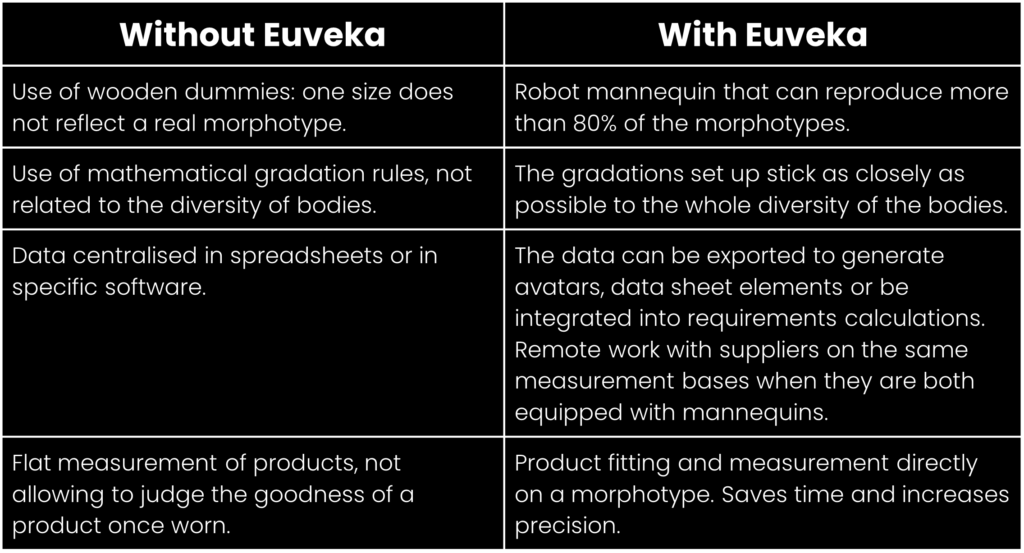
According to a recent US study, only 9% of people manage to achieve their yearly resolutions.
In the current context, which is still pandemic with COVID-19, variants and increasing cases, there is every reason to believe that resolutions in the various sectors of activity must include the modernization of processes.
The world of textiles and clothing is no exception.
Judged to be the second biggest polluter on the planet, it was not until 1 January 2022 that the AGEC law was implemented in France so that brands could no longer destroy their unsold goods.
Since the law was enacted, various positions have been developed in companies and brands have implemented different recycling policies. The use of recycled materials is becoming the norm. Feathers, which are a by-product of the food industry, are being replaced by fake feathers, just as fur is being replaced by fake fur.
The new 2022 resolutions for the textile industry?

The recent rise and influence of platforms such as Vestiaire Collective (France) or Vinted (Lithuania) not only reflects a desire to consume differently, “by making the second choice the first choice”, but also reflects an industry that must evolve upstream.
The world is changing, we often hear. So does fashion, influenced by new trends and by the relationship to oneself. Nowadays, putting together a clothing collection has to take into account many more factors than it did 10 years ago.
Indeed, if good looks, colors, and price used to be enough to launch marketing plans to massively distribute a brand, it is different today.
New generations making the change
The new generations of buyers want inclusion, to think about animal welfare, for raw materials to have the lowest possible carbon footprint… and for products to fit them well, whatever their morphotype. For this last point, it is the pattern makers who are the actors of change.
This profession, which is generally perceived as a person in front of a wooden mannequin, a pair of scissors, needles and who assembles scattered pieces of fabric to put the garment together, is at the heart of the potential evolution of fashion.
The profession of pattern maker in the textile and clothing industry relies on different programs and tools. Gerber and Lectra, until Lectra’s takeover of Gerber Technology, were the main programs used to create the patterns and then cut the rolls of fabric so that the product could be born.
With the environmental awareness of society, it has become necessary to find alternatives to reduce the number of samples or collection pieces. CLO3D, Solutions4Fashion, Browzwear, Optitex … are partly responding to this problem and different industrial players are increasing the number of workstations using 3D technologies to reduce material consumption by allowing decision-making based on 3D rendering.
Nevertheless, during production launches, it is necessary to take into account the morphology of customers and their ages so that the products developed fit them well.
Equipped with the Euveka solution and the associated software, the model makers can test and appreciate the fit and the rendering of the products being developed on all size grids and all fits. Through the use of the Mimeo software, allowing the adaptation of the robot mannequin in less than 90 seconds from one morphotype to another, the model makers can work more efficiently.

A garment designed with the morphological data of its targets is more likely to be tried on and sold.
Fashion designers, at the heart of this change, can accompany the movement towards a more ethical, more inclusive, more environmentally friendly and above all, more customer-friendly fashion.
The fashion of sustainable development must become the sustainable development of fashion.
#Modelist #Fashion #Euveka #Ecology
About Euveka
Founded in France in 2011, Euveka produces and distributes a “phygital” solution of connected mannequins that reproduce sizes and morphotypes to encompass as much as possible the diversity of consumers’ bodies.
Euveka’s mission is to enable brands to reduce the amount of unsold merchandise and customer returns due to “poor fit”, thus engaging the entire value chain towards a more sustainable and inclusive fashion.